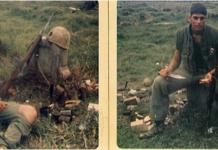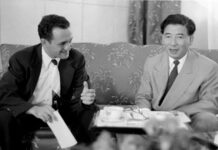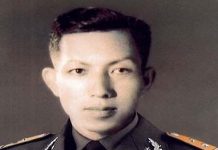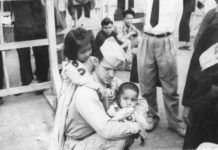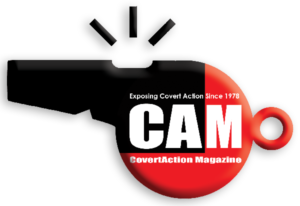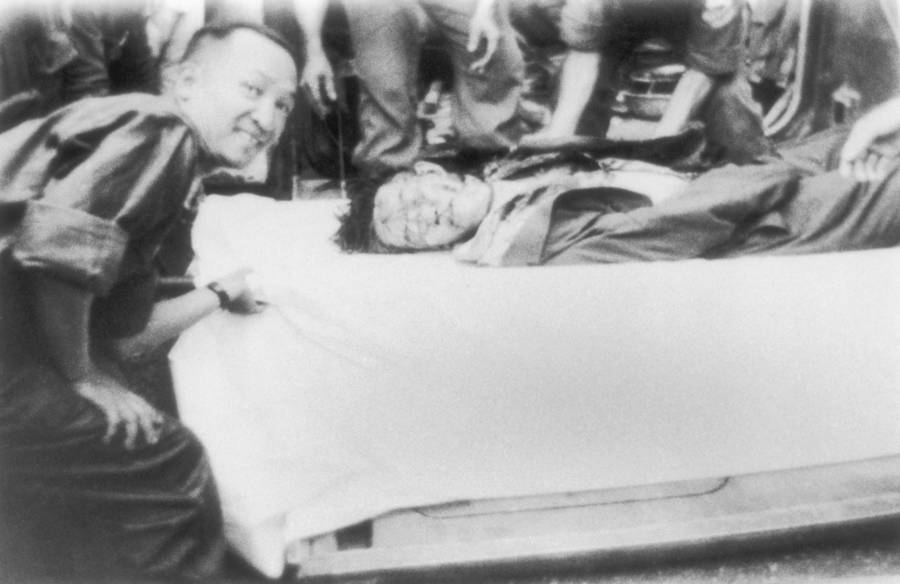
Lucien Conein was a key figure in coup that set the groundwork for the escalation of the Vietnam War
Lucien Conein was a legendary CIA officer known as “Black Luigi,” who ran agents behind the Iron Curtain in the early Cold War, helped organize Iran’s notoriously brutal secret police under the Shah, and coordinated all kinds of dirty tricks in Vietnam working under Edward Lansdale, the prototype for the “Quiet” and “Ugly” Americans.[1]
A newly declassified CIA Inspector General’s report reveals that Conein paid upwards of $65,000 in bribes to a group of South Vietnamese generals led by Tran Van Don who overthrew and assassinated South Vietnamese Premier Ngo Dinh Diem and his brother, Ngo Dinh Nhu, on November 2, 1963.
The CIA Inspector General’s report states that the CIA had “not been in favor of the decision to abandon the Diem regime,” which it had played a crucial role in helping to create. However, it “faithfully carried out instructions” from the U.S. embassy and White House.
Conein and another CIA officer, Alfonso Spera, were “the contacts with the coup generals,” according to the report. Conein was “at the generals’ command post throughout the fighting” during the coup. He furnished General Don with about $65,000 to buy off opposition military units while the coup was in progress.


The CIA emphasized that it had no hand in the assassinations of Diem and Nhu, who ran the regime’s security apparatus, and no foreknowledge of the assassinations.[2]
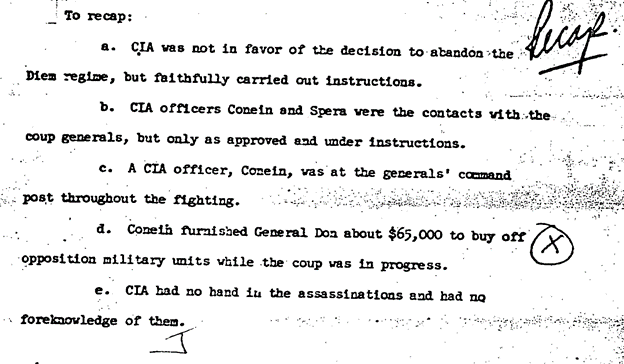
The coup against Diem was a historical turning point that set the groundwork for the escalation of the Vietnam War. The leaders who replaced Diem were even less popular and more corrupt, and could not be salvaged even with a massive U.S. troop presence.
No Miracle Man
An anti-communist Catholic, Diem had been installed as South Vietnam’s leader with U.S. backing following what was supposed to be the temporary division of Vietnam following the 1954 Geneva Agreements. While North Vietnamese leader Ho Chi Minh had led the liberation war against France, Diem had sat out the 1st Indochina War (1946-1954) at a monastery in New Jersey, where he courted support from the U.S. political elite.[3]

The American Friends of Vietnam (AFV) was a lobby group supported by John F. Kennedy, which advanced propaganda in the U.S. media depicting Diem as a “miracle man” in Southeast Asia who was going to save Vietnam from the communists.[4]
After calling Diem the “Winston Churchill of Asia,” Lyndon B. Johnson in a moment of candor told a reporter: “Shit, he’s the only boy we’ve got.”[5]
The CIA had played a crucial role in fortifying Diem’s rule between 1954 and 1963 by encouraging Catholics to migrate from North Vietnam to the South to provide a base of support for Diem while trying to sabotage North Vietnam’s economy.
Hoping to cripple the country’s transportation system, Conein himself concocted such ploys as concealing explosives in the coal that fueled its railway locomotives.[6]
Conein, additionally, was part of the CIA’s efforts to build up and manage Diem’s repressive internal security apparatus, which hunted down, tortured and murdered members of the Viet Minh who had fought against France in the 1st Indochina War.
Described by journalist Stanley Karnow as a “swashbuckling soldier of fortune” whom the CIA relied on to perform America’s “dirty tricks” around the world,”[7] Conein was a former member of the Corsican Brotherhood, according to CIA and FBI files, expert in the practice of “state sponsored murder, or assassination.[8]
In the early 1970s, he ran Phoenix program assassins inside the Drug Enforcement Administration (DEA) where he operated under Agency cover.[9]

Born in France and raised in Kansas City, Conein had first parachuted into Vietnam’s northern mountains in 1945 with a unit of the Office of Strategic Services (OSS-CIA predecessor) that trained communist guerrillas to fight the Japanese.[10]
After operating undercover in Berlin, where his CIA boss described him as a “horrible man” and “total gangster,” Conein returned to Vietnam with Edward Lansdale’s secret team in 1954 and began coordinating Diem’s counterinsurgency operations directed against the Vietminh and other political subversive groups.
Lansdale had been known for adopting macabre tactics while helping to suppress a leftist guerrilla revolt in the Philippines in the early mid-1950s. During that time, he had been a close adviser to Filipino President Ramon Magsaysay in a role that he also performed for Diem.
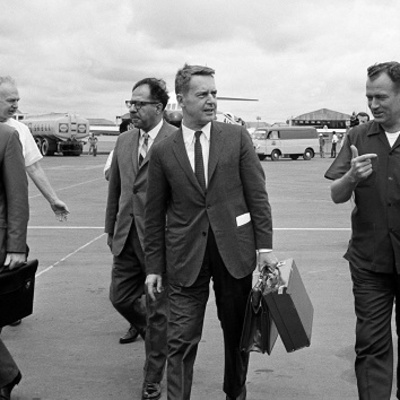
The Kennedy administration backed a coup against Diem even though he had been America’s boy in South Vietnam because things had not gone according to plan under his rule.
The repressive anti-communist campaign coordinated by the CIA triggered a full-scale guerrilla war led by the National Liberation Front (NLF), a southern-based organization that aimed to expel Diem and his American advisers and reunify Vietnam under Ho Chi Minh.
On June 11, 1963, the images of the self-immolation of Buddhist monk Thích Quang Duc shocked the world and focused attention on the autocratic, repressive, unstable and corrupt nature of Diem’s rule.
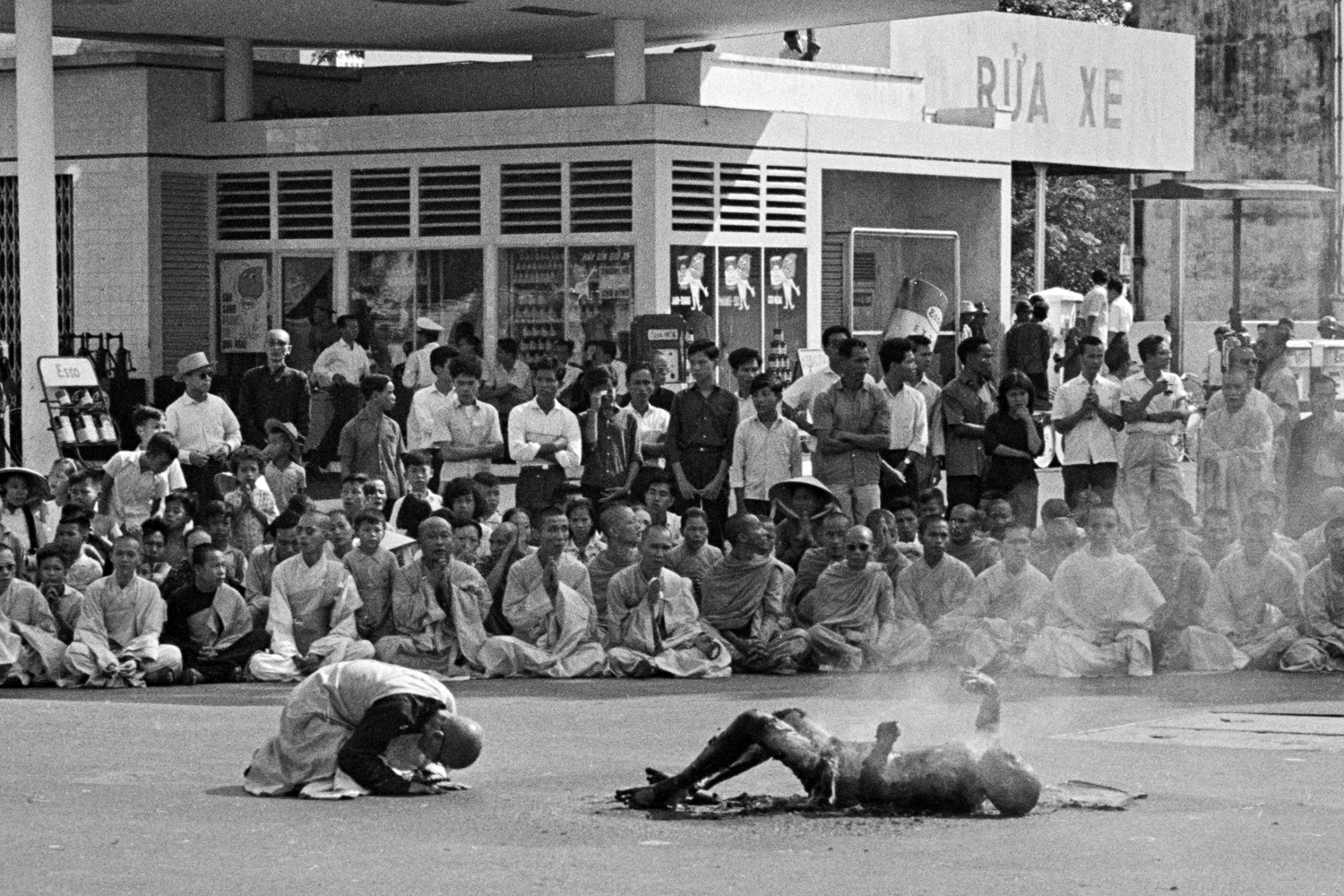
The immolation had followed from Diem’s violent suppression of peaceful Buddhist demonstrations that had resulted from his persecution of the Buddhists.
Kennedy and Lodge Override the CIA’s Top Brass
The CIA’s Inspector General report is among a set of new documents featured at George Washington University’s National Security Archive, which detail the CIA’s crucial role in the November 2, 1963, coup in South Vietnam.
The documents make clear that Diem’s fate was sealed during the May 1963 Buddhist crisis and immolations when plans for his overthrow were established.
A green light was given for the coup by Kennedy, who oversaw a large U.S. troop escalation in South Vietnam and inaugurated chemical warfare attacks under Operation Ranch Hand.[11]
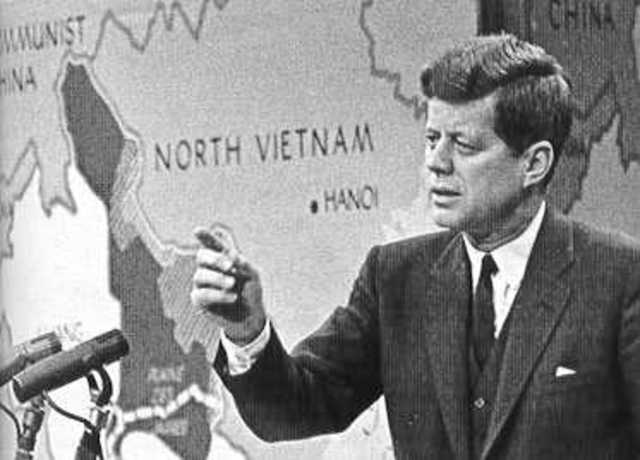
In a White House meeting three days before the coup, Kennedy explained that “the burden of proof should be on the coup promoters to show that they can overthrow the Diem government and not create a situation in which there would be a draw.” Kennedy implied in these statements that, if the burden of proof was established, then he was supportive.
Conein was selected as the key on-the-ground person because of his close relationship with the coup plotters.
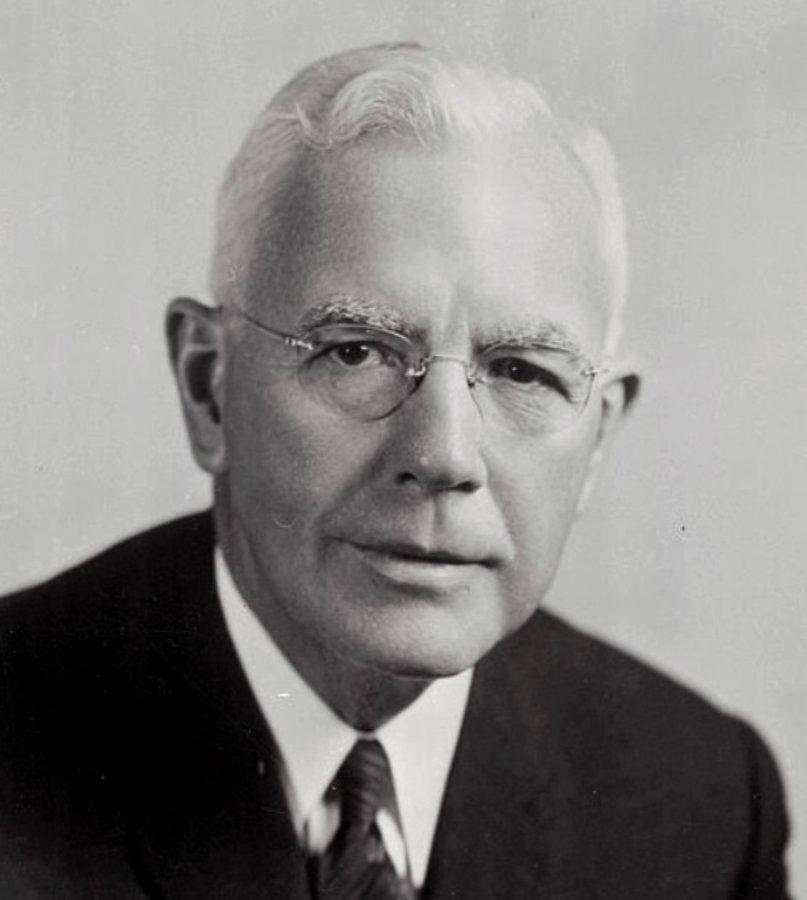
CIA Director John McCone and CIA Far Eastern Division Chief William Colby were opposed to the coup and made the strongest arguments against it.
These senior CIA officials were overruled by the president and outmaneuvered by the U.S. ambassador to South Vietnam, Henry Cabot Lodge, Jr., an old political rival of Kennedy who said the operation should be “deniable”—that is the U.S. involvement should not show.
Lodge told Conein that he should assure coup plotter Duong Van “Big” Minh—whom he admitted he did not really have great confidence in—that the U.S. would not “thwart” the coup.

Conein was further told to review the general’s plans and that he should assure “Big Minh” that the U.S. government would continue aid if “the new government seem[ed] likely to gain the support of the people and [showed promise] of winning the war.”
Colby’s opposition to the coup was not based on any humanitarian motive but resulted from his defense of Ngo Dinh Nhu, whose image he felt had been undermined by his reputation as “intriguing, sinister and ruthless” and by his wife’s “harsh and sometimes hysterical utterances.”
According to Colby, Nhu was “ruthless” though “highly intelligent, sophisticated…fully anticommunist…non-corrupt…and experienced in the practical techniques of political power.”

Supportive of U.S.-backed initiatives such as the Strategic Hamlet program, Nhu had developed unconventional paramilitary forces among Montagnards and other minority groups and was successful in establishing the Republican Youth, which Colby acknowledged had “fascistic” overtones.[12]
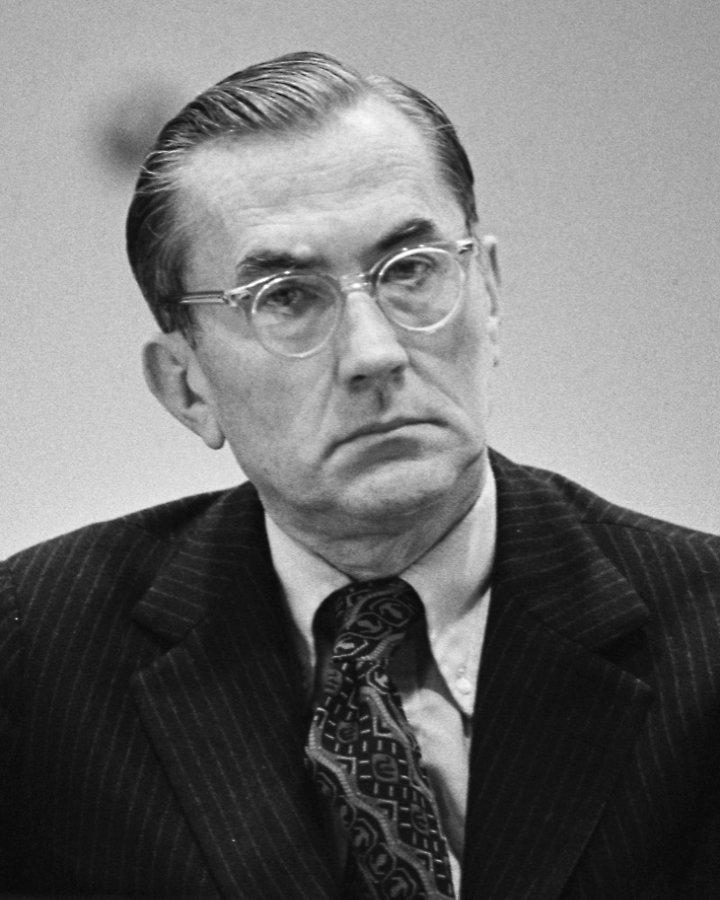
Colby wrote that Nhu represented a “strong, reasonably well oriented and efficient potential successor of Diem as a leader of a country fighting communist subversion, establishing its national solidarity and building a modern society….The image problems could be addressed through propaganda efforts. Nhu is a desirable rather than a catastrophic candidate.”[13]
Trying to Keep Vietnam Divided
The Kennedy administration did not buy into Colby’s logic, believing that the Diem ruling clique was no longer useful to the U.S. and had to be replaced by a more stable client government that could effectively suppress the NLF (aka Vietcong).
In August 1963, the Far East staff in Washington had concluded that Diem’s continued rule would “make a communist victory virtually inevitable.”[14]
Diem and Nhu had also begun to make overtures toward the NLF and North Vietnamese government in anticipation of a potential peace agreement that could end the conflict.[15]
The U.S. government could not allow that because they did not want Vietnam to be unified under communist rule.
The U.S. goal was to sustain Vietnam’s division and establish South Vietnam as a military outpost that could be used for subversion operations across Southeast Asia and that would present new opportunities for U.S. corporations.[16]
In memos presented as part of the National Security Archive collection, Lodge laid out a set of instructions to Conein and Spera in which they were to give the coup plotters a clear system of incentives to proceed with the regime-change operation.
Conein and Spera were to emphasize that, unless the Nhus were removed from power and Buddhists who had been jailed in their repressive campaign freed, that the generals could expect an end to U.S. financial and military support, which was keeping the South Vietnamese government afloat.

Interestingly, one of Conein’s meetings with Tran Van Don took place in a dentist’s office in Saigon.
Once the CIA had agreed to the plot, acting CIA Saigon Station Chief David Smith stated: “We do not set ourselves irrevocably against [the] assassination plot since the other two alternatives mean either a bloodbath in Saigon or a protracted struggle.”[17]
“If You Hesitate, You’re Going to Be Lost”
The coup started on November 1 at 13:15 Saigon time and Conein was told only two hours in advance.
At that time, he was asked to join the generals at their headquarters and to take as much money with him as he could. He took five million piastres that had been stored in a safe in his house, which was used to buy the loyalty of additional troops.
Though the CIA later denied any responsibility for Diem and Nhu’s assassination, Conein told an NBC news program in 1971 that, when the generals wavered, he had offered incitement and support. As he recalled, he told the generals, “Once you are into the attack, you must continue. If you hesitate, you are going to be lost.”
Additionally, Conein divulged that there had been a vote among the generals, and they had decided in advance to assassinate Diem—not at the last second as the public had been told.[18]
Concein himself sanctioned the killings, having told the Generals that a “flight [of Diem and Nhu out of the country] was not in the books” since there was “no plane and no place to send them.”[19]
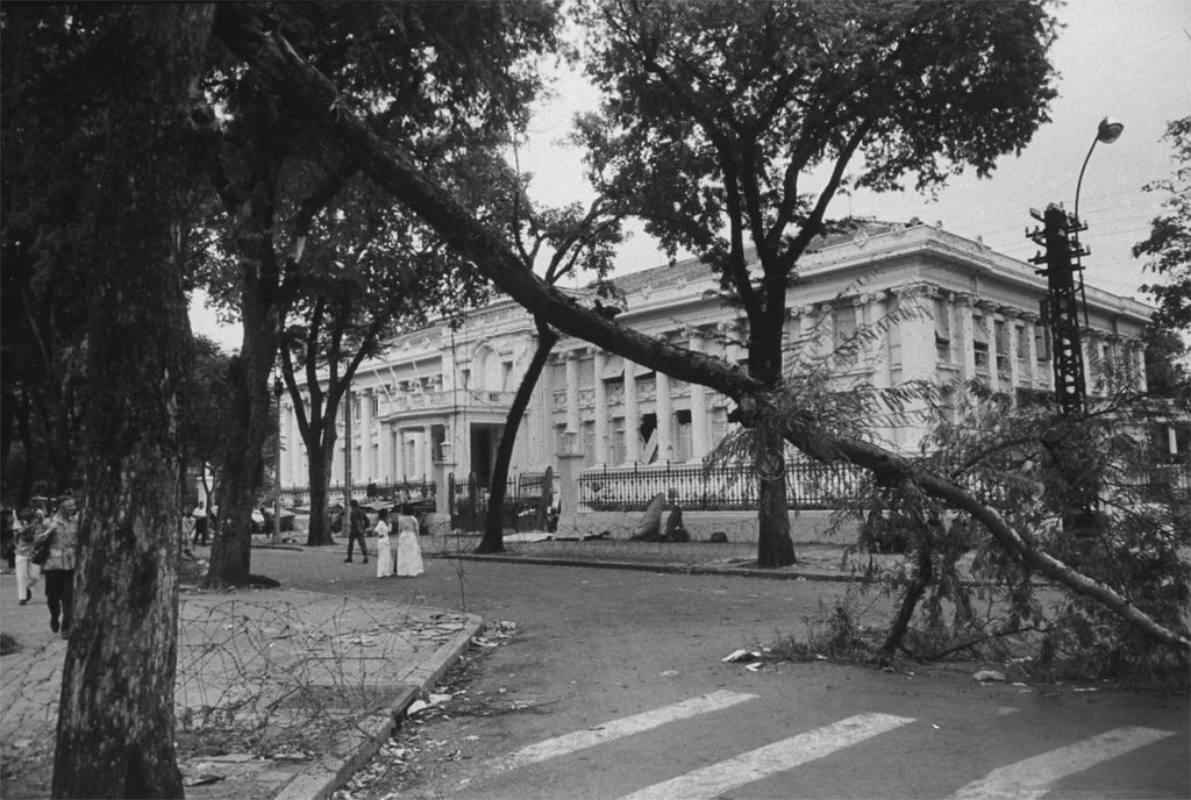
After Diem and Nhu’s assassination, Conein was awarded a distinguished “intelligence star,” for carrying out an act of “courage performed under hazardous conditions or great risk.”
According to historians Arturo Jimenez-Bacardi and Luca Trenta, the award suggested that the CIA saw Conein as much more than a simple bystander to the evolving coup but as a key coordinator of it.
CIA Was Central to Escalation of the Vietnam War
The National Security Archive documents on the November 2, 1963, coup are historically significant on numerous levels.
For one thing, they confirm the active role that John F. Kennedy played in the coup as part of an attempt to salvage a U.S. client regime in South Vietnam.[20]
Another significant aspect is to show the centrality of the CIA to U.S. policy in South Vietnam.
A wave of revisionist historians are intent on showing that South Vietnam had a relatively stable and popular government and that Diem was an authentic nationalist with a distinct political vision who was relatively successful as a leader. The U.S. in turn could have potentially won the Vietnam War if Diem had remained in office.[21]
The former claim repeats the viewpoint of William Colby, who at least acknowledged the fascistic character of Diem’s youth brigades and the ruthlessness of Nhu.
Presenting the Vietnam War as an internal civil war among Vietnamese, the revisionist historians who valorize Diem and the South Vietnamese government underplay the U.S. government and CIA’s importance to the Vietnam War.
Their analysis is undermined by the documents showing that the traitorous generals who overthrew Diem were paid by the CIA under orders from the White House.
The historical record clearly shows that politicians in Washington were at the forefront in engineering South Vietnamese political developments in a way that resulted in the escalation of the Vietnam War—and the human cataclysm that accompanied it.
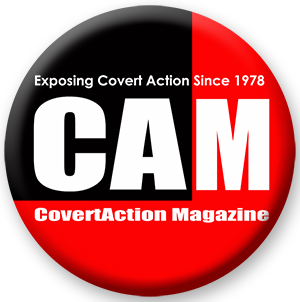
Tim Weiner, “Lucein Conein, 79, Legendary Cold War Spy,” The New York Times, June 7, 1998; Stanley Karnow, “The Lives They Lived: Lucien E. Conein; Spook,” The New York Times, January 3, 1999. ↑
Diem and Nhu were assassinated in the back of an armored vehicle afer they fled from the presidential palace and tried to evade capture. ↑
- More background on Diem can be found in Seth Jacobs, Cold War Mandarin: Ngo Dinh Diem and the Origins of America’s War in Vietnam, 1950-1963 (New York: Rowman & Littlefield, 2006).
For more on the American Friends of Vietnam, see Joseph G. Morgan, The Vietnam Lobby: The American Friends of Vietnam, 1955-1975 (Chapel Hill: The University of North Carolina Press, 2019). ↑
See Stanley Karnow, Vietnam: A History, rev ed. (New York: Penguin Books, 1997). ↑
Karnow, “The Lives They Lived: Lucien E. Conein; Spook.” ↑
Karnow, “The Lives They Lived: Lucien E. Conein; Spook.” Conein bragged about being in the Corsican mafia. He was appointed chief of covert operations for the Drug Enforcement Administration (DEA) in the early 1970s, but many considered this a cover for his participation in CIA drug-trafficking operations. ↑
Karnow, “The Lives They Lived: Lucien E. Conein; Spook;” H.P. Albarelli Jr. Coup in Dallas: The Decisive Investigation Into Who Killed JFK, with Leslie Sharp and Alan Kent and foreword by Dick Russell (New York: Skyhorse Publishing, 2021), 41. ↑
Author interview with Daniel Sheehan, CIA expert, September 26, 2025. Conein carried out assassinations to ensure that the drug trade remained under the control of a cabal in the CIA led by George H.W. Bush and Theodore Shackley. ↑
Alfred W. McCoy, Cold War on Five Continents: A Global History of Empire and Espionage (Chicago: Haymarket Books, 2025), 242. Prior to joining the army, Conein was known to associate with other delinquent youths. In the army, one superior noted that Conein was “reckless” and “evaded official policies.” ↑
See Noam Chomsky, Rethinking Camelot (Boston: South End Press, 1993). ↑
Colby acknowledged that “shady techniques have been used, with Nhu’s approval to accumulate funds for use for political organizations, but not for personal gain.” According to Colby, Nhu combined an intense Vietnamese nationalism and anti-colonialism, with insistence that the Vietnamese solve their problems and build their country to the greatest extent possible through their own efforts rather than relying on foreign assistance.” Colby, however, accused Nhu of having excessive vanity, or a fascination with intrigue and an intellectual arrogance. This has on occasion, he said, “led him to statements which, if not false, can only be tortuously rationalized and occasionally to an acceptance of patently false but tempting stories.” ↑
In a racist statement, Colby wrote that South Vietnam had seen “little Asian brutality except in the Vietcong war.” The statement suggests that Asians were uniquely brutal and not Americans or Westerners, which is untrue. ↑
McCoy, Cold War on Five Continents, 242. ↑
See Seymour Hersh, “A Lost Chance for Peace in Vietnam?” Sri Lanka Guardian, May 1, 2025. ↑
U.S. imperialist objectives at the time were detailed in Noam Chomsky, For Reasons of State (New York: Pantheon, 1973), and Peter Dale Scott, The War Conspiracy (Indianapolis, IN: Bobbs Merrill, 1972), among other works. ↑
McCone and Colby rejected Smith’s support for assassination. Attorney General Robert F. Kennedy was also opposed to the coup because he believed that it might undermine the war effort, which at that time, he zealously supported. ↑
In 1981, the generals’ decision to kill Diem was confirmed by General Tran Van Don. Don admitted that the generals feared a change of heart by the United States. If Diem had been kept prisoner, “perhaps after three months the Americans would have replaced him and the Generals by bringing back the Nhus.” ↑
McCoy, Cold War on Five Continents, 242. These comments suggest that the Kennedy administration sanctioned Diem’s killing since no plan was put in place to get him out of the country after being overthrown. ↑
This role counters the belief held in some circles that Kennedy was intent on withdrawing all U.S. troops from Vietnam and ending the U.S. commitment there. Additionally, Kennedy’s conflict with the top CIA brass over the Diem coup provides a motive for why the CIA hated Kennedy and sought his assassination. The CIA’s hatred was not because Kennedy was transforming into a pacifist—as Oliver Stone, James Douglass, Aaron Good and other historians claim, or was against covert operations. Rather, it was because he had turned on the CIA’s protégé and was intent on undercutting the CIA’s power within the Washington national security bureaucracy. ↑
These historians include ones who have received choice academic appointments, such as Pierre Asselin, Jessica Chapman, and Edward Miller among others. ↑
CovertAction Magazine is made possible by subscriptions, orders and donations from readers like you.
Blow the Whistle on U.S. Imperialism
Click the whistle and donate
When you donate to CovertAction Magazine, you are supporting investigative journalism. Your contributions go directly to supporting the development, production, editing, and dissemination of the Magazine.
CovertAction Magazine does not receive corporate or government sponsorship. Yet, we hold a steadfast commitment to providing compensation for writers, editorial and technical support. Your support helps facilitate this compensation as well as increase the caliber of this work.
Please make a donation by clicking on the donate logo above and enter the amount and your credit or debit card information.
CovertAction Institute, Inc. (CAI) is a 501(c)(3) non-profit organization and your gift is tax-deductible for federal income purposes. CAI’s tax-exempt ID number is 87-2461683.
We sincerely thank you for your support.
Disclaimer: The contents of this article are the sole responsibility of the author(s). CovertAction Institute, Inc. (CAI), including its Board of Directors (BD), Editorial Board (EB), Advisory Board (AB), staff, volunteers and its projects (including CovertAction Magazine) are not responsible for any inaccurate or incorrect statement in this article. This article also does not necessarily represent the views the BD, the EB, the AB, staff, volunteers, or any members of its projects.
Differing viewpoints: CAM publishes articles with differing viewpoints in an effort to nurture vibrant debate and thoughtful critical analysis. Feel free to comment on the articles in the comment section and/or send your letters to the Editors, which we will publish in the Letters column.
Copyrighted Material: This web site may contain copyrighted material the use of which has not always been specifically authorized by the copyright owner. As a not-for-profit charitable organization incorporated in the State of New York, we are making such material available in an effort to advance the understanding of humanity’s problems and hopefully to help find solutions for those problems. We believe this constitutes a ‘fair use’ of any such copyrighted material as provided for in section 107 of the US Copyright Law. You can read more about ‘fair use’ and US Copyright Law at the Legal Information Institute of Cornell Law School.
Republishing: CovertAction Magazine (CAM) grants permission to cross-post CAM articles on not-for-profit community internet sites as long as the source is acknowledged together with a hyperlink to the original CovertAction Magazine article. Also, kindly let us know at info@CovertActionMagazine.com. For publication of CAM articles in print or other forms including commercial internet sites, contact: info@CovertActionMagazine.com.
By using this site, you agree to these terms above.
About the Author

Jeremy Kuzmarov holds a Ph.D. in American history from Brandeis University and has taught at numerous colleges across the United States. He is regularly sought out as an expert on U.S. history and politics for radio and TV programs and co-hosts a radio show on New York Public Radio and on Progressive Radio News Network called “Uncontrolled Opposition.”
He is Managing Editor of CovertAction Magazine and is the author of six books on U.S. foreign policy, including Obama’s Unending Wars (Clarity Press, 2019), The Russians Are Coming, Again, with John Marciano (Monthly Review Press, 2018), Warmonger. How Clinton’s Malign Foreign Policy Launched the U.S. Trajectory From Bush II to Biden (Clarity Press, 2023); and with Dan Kovalik, Syria: Anatomy of Regime Change (Baraka Books, 2025).
Besides these books, Kuzmarov has published hundreds of articles and contributed to numerous edited volumes, including one in the prestigious Oxford History of Counterinsurgency .
He can be reached at jkuzmarov2@gmail.com and found on substack here.



